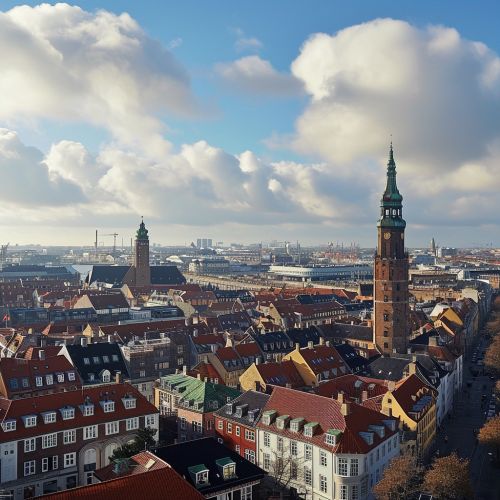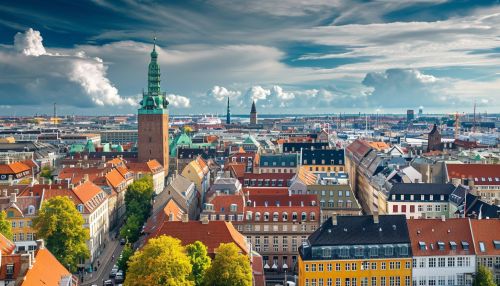Copenhagen
History
Copenhagen, the capital city of Denmark, has a rich and complex history that dates back to the 10th century. The city was originally a Viking fishing village known as "Havn" and it quickly grew in importance due to its strategic location between the Baltic and the North Sea. The city's name, which translates to "Merchant's Harbor," reflects its early role as a center for trade.
In the 12th century, Copenhagen became the capital of Denmark and the seat of the Danish monarchy. The city was fortified with a stone wall during the reign of King Valdemar Atterdag in the 14th century, and it continued to grow in size and influence throughout the Middle Ages.
During the 16th century, Copenhagen experienced a period of renaissance under the rule of King Christian IV. The king commissioned the construction of many iconic buildings and landmarks, such as the Rosenborg Castle and the Round Tower, which still stand as symbols of the city's historical grandeur.
Copenhagen's history in the 19th and 20th centuries was marked by significant social and political changes. The city was the center of the Danish resistance movement during World War II, and it played a crucial role in the country's transition to a modern welfare state in the post-war period.


Geography and Climate
Copenhagen is located on the eastern coast of the island of Zealand, facing the Øresund, the strait that separates Denmark from Sweden. The city's geography is characterized by flat, low-lying terrain and a temperate oceanic climate.
The city's climate is influenced by its northern latitude and coastal location, resulting in mild summers and cool winters. The average temperature in summer is around 20°C, while in winter it drops to around 0°C. Precipitation is evenly distributed throughout the year, with a slight peak during the summer months.
Copenhagen's geographical location has also shaped its urban development. The city is known for its beautiful waterfronts, green parks, and a network of canals that are reminiscent of those in Amsterdam.
Economy
Copenhagen is the economic hub of Denmark and one of the leading financial centers in Northern Europe. The city's economy is characterized by a high degree of specialization and a strong focus on knowledge-intensive sectors.
One of the key sectors in Copenhagen's economy is the life sciences industry, which includes pharmaceuticals, biotechnology, and medical technology. The city is home to many leading companies in this field, such as Novo Nordisk and Lundbeck.
Copenhagen is also a major center for information and communication technology (ICT), with a thriving startup scene and a strong presence of multinational tech companies like Microsoft and Google.
The city's economy is further bolstered by its status as a major tourist destination. Copenhagen's rich cultural heritage, combined with its modern, design-oriented lifestyle, attracts millions of visitors each year.
Culture
Copenhagen is renowned for its vibrant cultural scene and its contributions to art, design, and gastronomy. The city is home to numerous museums, art galleries, and theaters, as well as a thriving music and nightlife scene.
One of the city's most famous cultural institutions is the National Museum of Denmark, which houses a vast collection of Danish artifacts and artworks. The city is also home to the Royal Danish Theatre, which hosts performances of ballet, opera, and drama.
Copenhagen is also known for its design heritage, with a strong tradition of craftsmanship and a focus on functional, minimalist design. This is evident in the city's architecture, furniture design, and fashion industry.
The city's culinary scene is equally impressive, with a number of Michelin-starred restaurants and a strong focus on New Nordic cuisine, which emphasizes local, seasonal ingredients and innovative cooking techniques.
